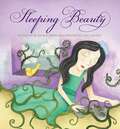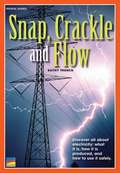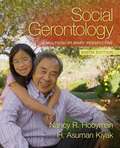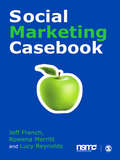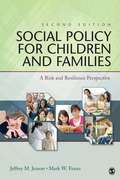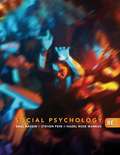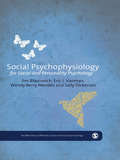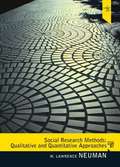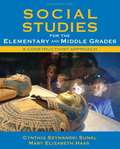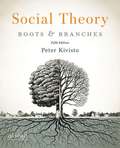- Table View
- List View
Sink or Float?
by Siu Lee Doreen Gay KasselThe fun and excitement of English and Language Arts learning continues in Grade 2 of Reading Street. This comprehensive and dynamic curriculum for homeschooling is geared toward young children who have some foundational English and Language Arts knowledge and are ready to strengthen their skills. Comprised of engaging activities, challenging content and weekly quizzes, Reading Street: Grade 2 is the next step in your child's path toward becoming a lifelong learner and reader. As with all Reading Street products, the Grade 2 system is formatted to help students meet certain age-appropriate goals. After completing this English and Language Arts homeschool program, your child should be able to: Read and comprehend two-syllable words. Identify common prefixes (such as pre-, un-, or re-) and suffixes (such as -able, -ad and -er). Correct mistakes made when reading out loud. Read books with two or more chapters. Understand the structure of stores (i. e. beginning, middle and end). Start selecting reading materials based on his/her own interests. Identify the "who," "what," "when," "where," "why" and "how" of the text. While the goals of second Grade English and Language Arts are numerous, Reading Street will help you craft engrossing lessons. Your child will garner important English and Language Arts skills while completing a workbook, reading stories and poems, and taking assessments. Planning these lessons will be easier than ever, as all Reading Street systems are broken down into weekly Big Ideas. All the work your child does on a given week is formulated around that single concept for an organized and challenging curriculum. With six easy-to-follow units, Reading Street: Grade 2 is the perfect tool for homeschooling parents. Your child will enjoy the reading selections and activities, and you'll love to see your student growing into a knowledgeable individual. We're confident that this product is the right one for you. For more information on the specific materials found in Grade 2 of Reading Street, check out the Features and Benefits page.
Skills in Biology (Third Edition)
by Tracey Greenwood Biozone International StaffProvides comprehensive guidelines for planning and executing biological investigations in the laboratory and field.
Sleeping Beauty: Traditional Tales Set 4 (Traditional Tales Series #Four)
by Ruth MattisonNIMAC-sourced textbook
Slow and Steady Wins the Race; Luke and the Books
by Dina Anastasio Amanda Jenkins Lyn Boyer Shawn ByousLinda and her friends decide to have a race to the cave, but no one wins. What has distracted them? Luke's report on 19th Century settlers is due tomorrow, but the computer has crashed. What will he and the Oak Street kids do? Read this book to find out.
Snakeskin Canyon
by Becky Gold Diana KizlauskasThe fun and excitement of English and Language Arts learning continues in Grade 2 of Reading Street. This comprehensive and dynamic curriculum for homeschooling is geared toward young children who have some foundational English and Language Arts knowledge and are ready to strengthen their skills. Comprised of engaging activities, challenging content and weekly quizzes, Reading Street: Grade 2 is the next step in your child's path toward becoming a lifelong learner and reader. As with all Reading Street products, the Grade 2 system is formatted to help students meet certain age-appropriate goals. After completing this English and Language Arts homeschool program, your child should be able to: Read and comprehend two-syllable words. Identify common prefixes (such as pre-, un-, or re-) and suffixes (such as -able, -ad and -er). Correct mistakes made when reading out loud. Read books with two or more chapters. Understand the structure of stores (i. e. beginning, middle and end). Start selecting reading materials based on his/her own interests. Identify the "who," "what," "when," "where," "why" and "how" of the text. While the goals of second Grade English and Language Arts are numerous, Reading Street will help you craft engrossing lessons. Your child will garner important English and Language Arts skills while completing a workbook, reading stories and poems, and taking assessments. Planning these lessons will be easier than ever, as all Reading Street systems are broken down into weekly Big Ideas. All the work your child does on a given week is formulated around that single concept for an organized and challenging curriculum. With six easy-to-follow units, Reading Street: Grade 2 is the perfect tool for homeschooling parents. Your child will enjoy the reading selections and activities, and you'll love to see your student growing into a knowledgeable individual. We're confident that this product is the right one for you. For more information on the specific materials found in Grade 2 of Reading Street, check out the Features and Benefits page.
Snap, Crackle, and Flow
by Kathy French Pam HirschfeldFind out about what electricity is, how it is produced, and how it is used safely.
Social Gerontology (9th Edition)
by Nancy R. Hooyman H. Asuman KiyakThe primary focus of this book is on social gerontology and to present the diversities of the aging experience, the interaction between biological, psychological, social and cultural forces on aging, and the heterogeneity of the older population in a multidisciplinary manner.
Social Marketing Casebook
by Rowena Merritt Dr Lucy Reynolds Jeff FrenchSocial Marketing Casebook brings together for the first time a dedicated collection of social marketing case studies and vignettes from around the world.<P><P> Each case study is explored from the scoping and research stage right through to evaluation, providing the reader with a complete overview of the most important building blocks in social marketing and how these can be applied to the real world, including:<P> - Insights from the key people involved in social marketing and the identification of the common themes associated with successful social marketing strategies.<P> - An international range of cases from the health, environmental and civic sectors, from national and governmental programmes to local, small-budget interventions;<P> - Comprehensive coverage of the whole process, from strategy, and implementation, through to the challenges and lessons learned; and<P> - Academic exercises, discussion questions and references to reinforce student learning.<P> This book demystifies social marketing for undergraduate and postgraduate marketing and health studies students, as well as practitioners in government, public institutions, NGOs and private organisations looking to develop more effective social change programmes.
Social Networks and Natural Resource Management: Uncovering the Social Fabric of Environmental Governance
by Örjan Bodin Christina PrellSocial Network Analysis (SNA), a quantitative approach to the study of social relations, has recently emerged as a key tool for understanding the governance of natural resources. Bringing together contributions from a range of researchers in the field, this is the first book to fully explore the potential applications of SNA in the context of natural resource management. Topics covered include the role of SNA in stakeholder selection; improving fisheries management and conservation; the effect of social network ties on public satisfaction and agrarian communication networks. Numerous case studies link SNA concepts to the theories underlying natural resource governance, such as social learning, adaptive co-management and social movements theory. Reflecting on the challenges and opportunities associated with this evolving field, this is an ideal resource for students and researchers involved in many areas of natural resource management, environmental biology, sustainability science and sociology.
Social Policy for Children and Families: A Risk and Resilience Perspective (Second Edition)
by Mark W. Fraser Jeffrey M. JensonIncorporating cutting-edge research, the authors of this multidisciplinary text offer new evidence that a public health framework based on ecological theory and principles of risk and resilience is essential for the successful design of social policy. Contributing authors apply the editors conceptual model across the substantive domains of child welfare, education, mental health, health, developmental disabilities, substance use, juvenile justice, and now poverty. This is an ideal core text for graduate and upper level undergraduate courses entitled Social Policy, Advanced Social Policy, or Social Work with Children and Families in departments of social work, family studies, human services, sociology, public health, or psychology. It is also a vital resource for elected officials, policy makers, and others interested in the evolution of policies aimed at preventing problem behaviors and supporting children and families.
Social Psychology (Eighth Edition)
by Saul Kassin Steven Fein Hazel Rose MarkusDistinguished by its current-events emphasis, strong diversity coverage, and engaging connections drawn between social psychology and students' everyday lives, Social Psychology, Eighth Edition, remains one of the most scholarly and well-written texts in its field. Integrating classic and contemporary research, the text also includes comprehensive coverage of social cognition and evolutionary psychology, and features authoritative material on social psychology and the law. For this edition, Saul Kassin and Steven Fein welcome Hazel Rose Markus to the author team. In addition, coverage of culture and diversity are integrated into every chapter by Hazel Rose Markus, a leader and respected researcher in the study of cultural psychology.
Social Psychophysiology for Social and Personality Psychology (The SAGE Library of Methods in Social and Personality Psychology)
by Dr Sally S. Dickerson Wendy Berry Mendes Dr James J. Blascovich Dr Eric VanmanThe SAGE Library in Social and Personality Psychology Methods provides students and researchers with an understanding of the methods and techniques essential to conducting cutting-edge research.<P><P> Each volume within the Library explains a specific topic and has been written by an active scholar (or scholars) with expertise in that particular methodological domain. Assuming no prior knowledge of the topic, the volumes are clear and accessible for all readers. In each volume, a topic is introduced, applications are discussed, and readers are led step by step through worked examples. In addition, advice about how to interpret and prepare results for publication are presented.
Social Research Methods: Qualitative and Quantitative Approaches (7th Edition)
by W. Lawrence NeumanThis text presents a comprehensive and balanced introduction to both qualitative and quantitative approaches to social research with an emphasis on the benefits of combining various approaches.
Social Studies for the Elementary and Middle Grades: A Constructivist Approach
by Cynthia Szymanski Sunal Mary Elizabeth HaasThis book discusses flexible strategies for teaching today's diverse learner, the structure of the knowledge to be learned, how to help students reconstruct present ideas, and how to translate theory and recent research into lesson plans and units. Packed with activities, up-to-date technology, teaching strategies, and a constructive approach, this text demonstrates how to use developmentally appropriate strategies to help students construct important social studies ideas and skills.
Social Theory: Roots And Branches (Fifth Edition)
by Peter KivistoEdited by Peter Kivisto, this acclaimed collection of accessible primary source readings enables students to experience "firsthand" a wide range of perspectives that are shaping current sociological theory. Now in its fifth edition, Social Theory: Roots and Branches covers both classical theory (the roots) and contemporary theory (the branches) and shows how they are linked. Part One features work from such well-known classical theorists as Marx, Durkheim, Weber, and Simmel. It also presents selections by theorists outside of the discipline and from writers who are often overlooked in competing collections, including W. E. B. Du Bois, Charlotte Perkins Gilman, and Harriet Martineau. Part Two offers readings that illustrate major contemporary theoretical approaches, ending with a section on cutting-edge directions in theoretical discourse. Now featuring a revised and expanded introductory chapter, this fifth edition offers seventeen new readings, including eight by theorists who are new to this collection.

